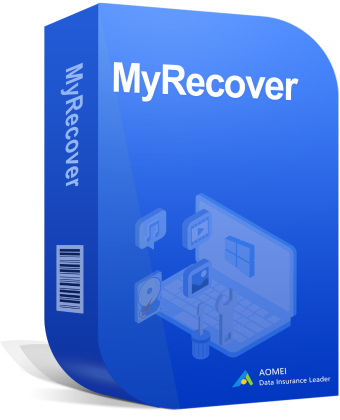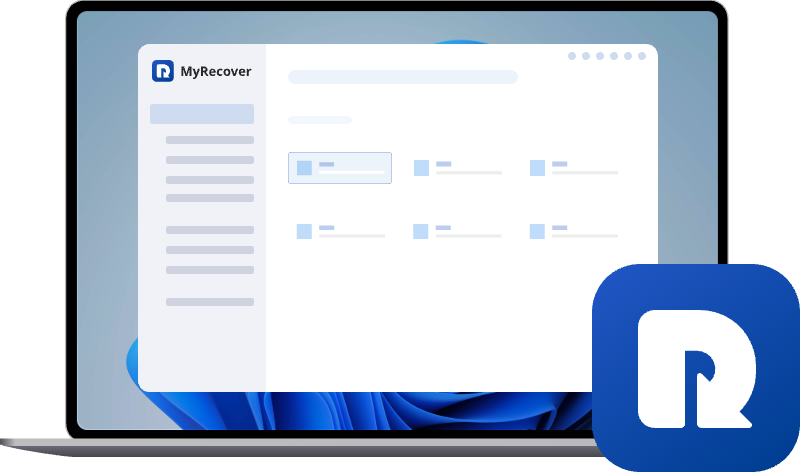[Solved] How to Recover Deleted History on Microsoft Edge on Windows 10/11
It can indeed be frustrating when you find that your Microsoft Edge browsing history is missing when you want to revisit certain websites. Fear not! This step-by-step guide will focus on the problem of how to recover deleted history on Microsoft Edge on Windows. Get back your lost Edge history effortlessly with our expert tips.
Can I Recover Deleted Browsing History on Microsoft Edge?
Microsoft Edge is a cross-platform wed browser developed by Microsoft, which provide fast, secure, and smart browsing experience. Accidentally deleting Microsoft Edge browsing history while trying to revisit a website or recover a webpage from the history is not an uncommon occurrence.
However, as we all know, Microsoft does not offer a feature like Recycle Bin to undo the deletion. This beg a question: can I recover deleted browsing history on Microsoft Edge? Absolutely yes! It is possible retrieve lost browsing history using correct methods. This guide will provide several solutions to recover deleted history on Microsoft Edge on Windows 10 and 11.
How to Recover Deleted History on Microsoft Edge on Windows 10 and 11
This section covers quick fixes and deep recovery solutions for all users, even beginners. These methods can help you retrieve the deleted browser history using Windows built-in tools, Edge's history file function, DNS cache, and third-party data recovery tools. Let's explore more details.
Method 1. Restore Previous Versions of History File
Even if the browsing history in Microsoft Edge is deleted, the history stored in the local SQLite database files will be modified rather than deleted. If you have enabled File History on Windows before data loss and added the folder to File History backup plan, Windows will keep backup versions of Edge history file. You may be able to recover an older copy of Edge's local history database.
Step 1. Navigate to the following path in File Explorer:
C:\Users\\AppData\Local\Microsoft\Edge\User Data\Default
- ★Tips:
- In this path, you may come across two files related to browsing history:
- History file: Contains visited URLs, titles, access times, etc.
- History-journal file: A temporary write log (used for transaction processing).
Step 2. Select the "History" file and right click on it, choose "Restore previous versions" from the context menu.
Step 3. A list of versions will be displayed, select a version from before the history was deleted, then click “Restore”.
Overwrite the previous browsing history file with the version you want, and the browser will redisplay the history. This method allows you to quickly and accurately find the files or versions you want to recover.
Alternatively, you can also use the Control Panel to restore deleted browsing history files, as well as more personal files based on your needs.
Step 1. Type "Restore your files with File History" on the Start menu and open it.
Step 2. Browse and select the folder containing the files you want to recover.
Step 3. Click the green "Restore" button to return the files to their original location.
Method 2. Check the Local History File (If Not Yet Overwritten)
If you haven’t backed up Edge’s local history files in advance, it doesn’t mean the browsing history is irrecoverable. It’s certainly possible as long as you act promptly. Edge stores history in SQLite database file. If deletion is recent, data might still be accessible with SQLite viewer.
Step 1. Download and install a SQLite viewer like DB Browser.
Step 2. Press "Win + R" to open run dialog and type "%LocalAppData%\Microsoft\Edge\User Data\Default\", then hit "Enter" to open Edge's history database.
Step 3. Browse through the items and select the file "History".
Step 4. Open it with DB Browser and find "visited_links", right click on it and choose "Export as CSV file".
Step 5. Open the ".csv" file to check the deleted browsing history.
Method 3. Use Cookies to Reconstruct Visited Sites
If the local Edge history files have been overwritten, browser might still retain some clues. Cookies are small data files stored by websites to track activity and preferences. They don’t contain full history, but they can help reconstruct where you’ve been.
Step 1. Launch Microsoft Edge and click the three vertical dots in the upper right corner, then select "Settings".
Step 2. Select "Privacy, search, and services" > "Cookies" > "See all cookies and site data".
Browse through the list of domains, these represent sites you’ve visited even if history is deleted.
Method 4. Use the DNS Cache (If the PC hasn't restarted)
DNS Cache a temporary record of domain names you’ve recently accessed, stored by the operating system for quick lookup. Even if browser history is gone, DNS cache may still contain records of recently visited sites.
Step 1. Open "Command prompt" and run it as administrator.
Step 2. Type the command "ipconfig /displaydns" and press "Enter" to see a list of recently accessed domains.
Step 3. Enter the command "ipconfig /displaydns > C:\dns_cache.txt" to export DNS caches.
Step 4. Open it with Notepad to find some browse clues.
This method won’t give full URLs but can help find deleted history on Windows 11 at the domain level, especially if your Edge history was deleted but the session is still active.
Method 5. Recover Deleted Browsing History with MyRecover
If the Edge history files have been completely overwritten and you don’t have any backups, you can consider using professional data recovery software to recover the overwritten files, as long as you act quickly. MyRecover can scan the local disk and provide a chance to recover lost files.
MyRecover supports the recovery of 1000+ file types, such as documents, videos, images, emails, etc. It also supports recovering deleted downloaded files from Google Chrome.

- Multiple Recovery Scenarios – Recovers deleted, formatted, or lost partition data, even after system crashes.
- Wide File Support– Restores documents, photos, videos, audio, and archives in various formats.
- Deep Scan Technology– Combines quick and deep scans for higher recovery success rates.
- User-Friendly Interface-Simple, guided steps make recovery accessible for all skill levels.
- Safe & Read-Only – Scans without overwriting original data to prevent further damage.
Step 1. Download and install MyRecover on your computer from secure channel, avoid installing it on the drive with lost files.
Step 2. Select the drive where the Microsoft Edge was stored to scan for lost files and click "Scan".
Step 3. Choose files you wish to recover from the recoverable lists and click "Recover".
Step 4. Select a safe location (not the original one) to save the recovered files.
When the recovery process is completed, the message "Files have been recovered successfully" will be displayed. You can access and check the recovered files by click the destination folder.
Final Words
Losing your browser history doesn’t have to be the end of the road. As you’ve seen, there are multiple ways on how to recover deleted history on Microsoft Edge, whether through Windows tool or third-party tool.
If you wish to simplify the recovery process, you can try MyRecover. It is designed precisely for this purpose, allowing users to recover data with just a click on the icon. If you have more advanced needs like recovering data from a crashed computer, previewing file contents in advance, or restoring unlimited amounts of data—you can upgrade to MyRecover's Professional edition.


